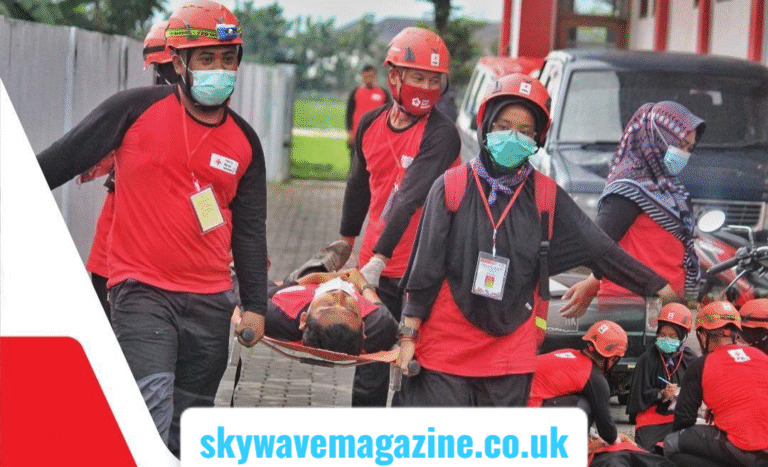
Introduction to RWU UAR
In today’s rapidly changing world, many terms and acronyms emerge in different industries, often leaving people curious about their true meaning and relevance. One such phrase is RWU UAR, a combination that has sparked attention in various professional, academic, and technological circles. While it may sound technical at first, RWU UAR has broader implications that go beyond a single domain. It is often associated with institutional initiatives, organizational frameworks, or collaborative programs that bring together research, education, and societal development. Understanding RWU UAR requires looking into its origins, applications, and how it influences both academic and industry-based activities.
Historical Context and Emergence of RWU UAR
The origins of RWU UAR can be traced back to institutional developments that focused on uniting research with applied results. Over the years, RWU UAR has been linked to collaborative partnerships between universities, research wings, and professional associations. The concept grew in importance when institutions started looking for ways to not only conduct research but also integrate it into real-world problem-solving. This transformation meant that RWU UAR became a bridge between theory and practice, giving both students and professionals a chance to work on solutions that had real impact.
Purpose and Objectives of RWU UAR
The fundamental objective of RWU UAR is to create a platform where research and practical application intersect. It focuses on:
- Strengthening collaboration between academic researchers and industry experts.
- Promoting innovation that directly benefits communities.
- Ensuring that educational institutions stay relevant to evolving industry demands.
By serving as a strategic link, RWU UAR helps bring efficiency, innovation, and impact to projects that might otherwise remain theoretical.
RWU UAR in the Educational Landscape
In the academic sector, RWU UAR is a strong driver of curriculum modernization. Universities that integrate RWU UAR principles tend to emphasize research-led teaching, where students are encouraged to explore real-world issues through academic investigation. This approach enhances critical thinking, analytical skills, and problem-solving abilities. It also helps students prepare for professional careers by giving them exposure to real industry challenges during their academic journey.
Technological Role of RWU UAR
With technology advancing at unprecedented speed, RWU UAR has found itself at the heart of digital transformation. Many institutions under the RWU UAR framework are adopting emerging technologies such as AI, big data analytics, and IoT to improve research efficiency. This is particularly significant for sectors like healthcare, engineering, environmental studies, and social sciences, where data-driven research can accelerate discoveries and practical solutions.
Impact on Industry Collaboration
RWU UAR plays a crucial role in strengthening the bridge between educational institutions and industries. Organizations that partner with RWU UAR-driven programs benefit from access to fresh talent, innovative research, and advanced methodologies. These collaborations often result in joint projects, internships, and sponsored research that not only benefit students but also provide industries with solutions tailored to their needs.
Global Relevance of RWU UAR
While RWU UAR may have emerged from a specific regional or institutional background, its model is applicable worldwide. Many countries have adopted similar collaborative approaches to ensure that their universities remain competitive in the global market. This universality means that RWU UAR serves as a blueprint for fostering research-driven growth across borders, enabling knowledge exchange and shared innovations.
Challenges Faced by RWU UAR
Like any initiative, RWU UAR faces its set of challenges. These may include:
- Limited funding for research projects.
- Difficulty in maintaining long-term industry partnerships.
- Need for faculty training in cutting-edge technologies.
- Bureaucratic delays in implementing collaborative programs.
Overcoming these challenges requires strategic planning, sustainable investment, and an openness to continuous change.
Case Studies and Success Stories
One example of RWU UAR’s impact can be seen in technology-driven agriculture programs where universities collaborated with local farmers to introduce precision farming techniques. Another success story involves medical research partnerships that led to innovative health monitoring systems. Such initiatives highlight how RWU UAR transforms research into tangible benefits for society.
RWU UAR and Policy Development
Governments and policy-making bodies have begun to recognize RWU UAR as a valuable framework for national development. Policies that encourage industry-university collaboration, funding for applied research, and incentives for innovation are aligned with RWU UAR’s principles. This alignment ensures that academic efforts are not isolated but integrated into broader economic and social growth plans.
Future Prospects of RWU UAR
The future of RWU UAR looks promising, especially as industries demand more research-based solutions. With the global economy shifting towards knowledge-driven development, RWU UAR is expected to become an essential part of educational strategies. Integration with digital technologies, international collaborations, and expanded funding models will further enhance its reach and effectiveness.
Comparative Analysis Table
| Aspect | RWU UAR Model | Traditional Academic Model |
| Industry Collaboration | High, ongoing partnerships | Low, occasional partnerships |
| Research Application | Direct, practical implementation | Mostly theoretical output |
| Student Involvement | High, hands-on project participation | Limited to classroom learning |
| Innovation Rate | Rapid due to external input | Moderate, academic pace |
Community and Social Development
RWU UAR is not limited to academic and industrial outcomes; it also plays a significant role in community development. By engaging with local communities through projects, training programs, and awareness campaigns, RWU UAR helps improve social well-being. For example, environmental projects under RWU UAR often involve local volunteers in reforestation, waste management, and renewable energy awareness.
Adopting RWU UAR in Different Sectors
While education and industry form the backbone of RWU UAR, its methodology can be applied to various sectors including:
- Public health for creating effective community outreach programs.
- Urban planning for sustainable city development.
- Environmental conservation for impactful local initiatives.
Such adaptability makes RWU UAR a versatile and powerful framework.
Conclusion
RWU UAR represents more than just a concept; it is a movement that integrates research, education, and industry for the greater good. By focusing on real-world applications, fostering industry collaboration, and promoting community development, RWU UAR stands as a progressive model for future growth. As the world continues to face complex challenges, such collaborative frameworks will become even more critical in shaping innovative, sustainable, and inclusive solutions.
FAQs
Q1: What does RWU UAR primarily focus on?
RWU UAR focuses on connecting academic research with practical industry and community applications for innovation and development.
Q2: How can students benefit from RWU UAR?
Students gain hands-on experience, industry exposure, and the opportunity to work on impactful real-world projects.
Q3: Can RWU UAR be implemented globally?
Yes, its collaborative framework can be adapted to suit the educational, industrial, and social development needs of any country.





